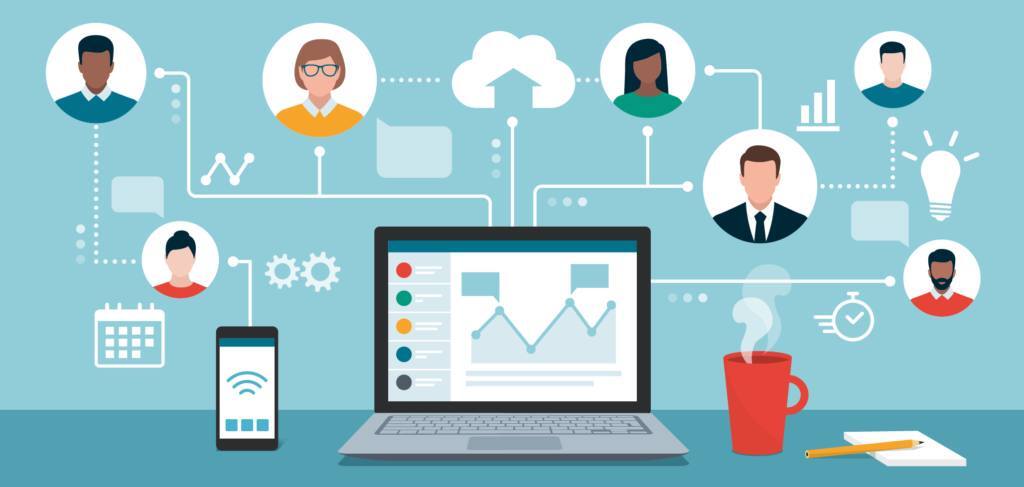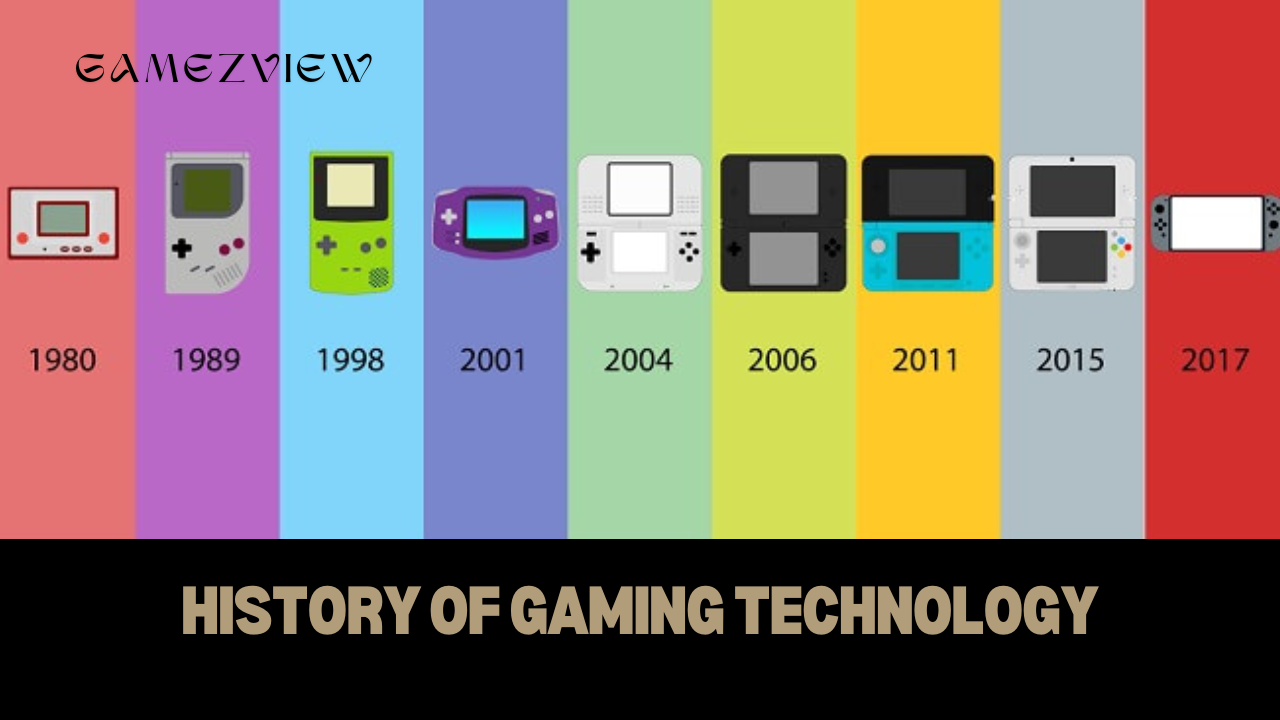In the digital age, technology has profoundly impacted various facets of human interaction, with communication and collaboration being at the forefront. The advent of the internet, mobile devices, and cloud computing has revolutionized how individuals and organizations connect, share information, and work together. This transformation has not only made communication faster and more efficient but has also expanded the possibilities for collaboration across geographic boundaries, industries, and cultures. This article delves into how technology is enhancing communication and collaboration, exploring key innovations, their benefits, and the challenges they bring.
The Evolution of Communication Technology
From Analog to Digital
Communication technology has come a long way from the days of landline telephones and fax machines. The shift from analogue to digital communication has been a game-changer, enabling instant and more reliable communication methods. Email, which emerged in the late 20th century, was one of the first digital communication tools to gain widespread adoption. It allowed users to send messages across the globe within seconds, marking a significant departure from traditional mail.

The introduction of mobile phones further revolutionized communication by making it possible to connect with others from virtually anywhere. As mobile technology evolved, the development of smartphones brought together voice communication, messaging, email, and internet access into a single device, further streamlining communication.
The Rise of Social Media
Social media platforms have also played a critical role in transforming communication. Platforms like Facebook, Twitter, LinkedIn, and Instagram have not only changed the way individuals interact socially but have also become essential tools for businesses and organizations. Social media allows for real-time communication with a global audience, making it possible to share information, ideas, and updates instantaneously.
Moreover, social media has enabled the creation of virtual communities where people can connect based on shared interests, professions, or goals. These communities foster collaboration and the exchange of knowledge, breaking down the barriers that once limited communication to physical proximity.
Exploring the Ethical Implications of Artificial Intelligence
Enhancing Communication in the Workplace
Instant Messaging and Chat Applications
In the modern workplace, instant messaging (IM) and chat applications have become indispensable tools for communication. Platforms like Slack, Microsoft Teams, and WhatsApp allow employees to communicate in real time, facilitating quick decision-making and problem-solving. These tools also support group chats, making it easier for teams to collaborate and stay updated on project progress.
Instant messaging platforms often integrate with other tools and software used in the workplace, allowing for seamless communication across different channels. For example, project management tools like Asana or Trello can be linked to IM platforms, enabling team members to receive notifications and updates directly in their chat interface.
Video Conferencing
Video conferencing technology has significantly enhanced remote communication by providing a more personal and interactive experience compared to traditional phone calls or emails. Tools like Zoom, Google Meet, and Microsoft Teams have become staples for businesses, especially in the wake of the COVID-19 pandemic, which necessitated a shift to remote work.
Video conferencing allows for face-to-face communication, making it easier to convey emotions and build rapport with colleagues, clients, or partners. It also supports screen sharing, which is particularly useful for presentations, demonstrations, and collaborative work. The ability to record meetings ensures that important discussions can be revisited, and those unable to attend can catch up later.
Email and Beyond
While email remains a primary mode of communication in many workplaces, its role has evolved with the integration of more sophisticated features and tools. Modern email clients like Gmail and Outlook offer advanced search capabilities, calendar integration, and task management features, making them more than just platforms for sending and receiving messages.
The integration of email with other collaboration tools, such as project management software or customer relationship management (CRM) systems, further enhances its utility. For instance, emails can be automatically tagged and categorized based on the project they relate to, ensuring that relevant communication is easily accessible to all team members.
Collaborative Tools and Platforms
Cloud-Based Document Sharing
Cloud computing has been one of the most transformative technological advancements in enhancing collaboration. Cloud-based platforms like Google Drive, Dropbox, and Microsoft OneDrive allow multiple users to access, edit, and share documents in real time. This eliminates the need for back-and-forth emailing of files and ensures that everyone is working on the most up-to-date version of a document.
These platforms support various file types, including text documents, spreadsheets, presentations, and even large media files. The ability to set permissions and access levels ensures that sensitive information remains secure while still allowing for collaborative work.
Project Management Tools
Project management tools have become essential for organizing and coordinating collaborative efforts, especially in large or distributed teams. Tools like Asana, Trello, and Monday.com provide a centralized platform where teams can plan, track, and manage their work.
These tools often include features like task assignments, deadlines, progress tracking, and reporting, which help keep projects on schedule and ensure accountability. By providing visibility into who is working on what, project management tools reduce the likelihood of tasks falling through the cracks and make it easier to identify and address bottlenecks.
Collaborative Software Development
In the field of software development, collaborative platforms like GitHub and GitLab have revolutionized how developers work together. These platforms use version control systems to track changes in code, allowing multiple developers to work on the same project simultaneously without overwriting each other’s work.
GitHub, for example, enables developers to contribute to open-source projects from anywhere in the world, fostering a global community of collaborators. The platform’s pull request feature allows team members to review and discuss changes before they are merged into the main codebase, ensuring that quality and consistency are maintained.
The Impact of Technology on Remote Collaboration
The Rise of Remote Work
The shift to remote work has been one of the most significant changes in the modern workplace, accelerated by the COVID-19 pandemic. Technology has made remote work not only possible but also effective, enabling teams to collaborate as if they were in the same physical location.
Remote collaboration tools, such as video conferencing, cloud-based document sharing, and project management platforms, have become essential for maintaining productivity and communication in a distributed workforce. These tools ensure that remote employees remain connected and engaged, even when working from different locations and time zones.
Virtual and Augmented Reality
Virtual reality (VR) and augmented reality (AR) are emerging technologies that hold great potential for enhancing remote collaboration. VR can create immersive virtual environments where team members can meet and interact as if they were in the same room, while AR can overlay digital information onto the physical world, enhancing real-time collaboration.
For example, VR platforms like Spatial allow users to create virtual workspaces where they can collaborate on 3D models, brainstorm ideas, or hold meetings. AR applications, on the other hand, can be used in fields like architecture or engineering to overlay design concepts onto physical structures, enabling real-time collaboration between remote teams.

The Role of Artificial Intelligence
Artificial intelligence (AI) is playing an increasingly important role in enhancing communication and collaboration. AI-powered tools can automate routine tasks, such as scheduling meetings, sorting emails, or even generating reports, freeing up time for more strategic work.
AI is also being used to enhance collaboration by providing insights and recommendations based on data analysis. For example, AI-driven analytics tools can identify patterns in team performance or communication, helping managers optimize workflows and improve productivity.
Moreover, AI-powered chatbots and virtual assistants are becoming common in customer service and support roles, handling routine inquiries and tasks, and escalating more complex issues to human agents. This allows teams to focus on higher-value work while ensuring that communication with customers remains seamless and efficient.
Challenges and Considerations
Digital Divide
While technology has enhanced communication and collaboration for many, it has also highlighted the digital divide – the gap between those who have access to modern technology and those who do not. This divide can be due to socioeconomic factors, geographic location, or infrastructure limitations.
In many developing regions, limited access to high-speed internet and modern devices can hinder participation in the digital economy, creating disparities in opportunities for communication and collaboration. Addressing the digital divide is essential to ensuring that the benefits of technology are accessible to all.
Security and Privacy Concerns
As communication and collaboration increasingly move online, security and privacy have become major concerns. The use of cloud-based platforms, instant messaging, and video conferencing can expose sensitive information to potential cyber threats if not properly secured.
Organizations must implement robust security measures, such as encryption, multi-factor authentication, and regular security audits, to protect their communication channels and data. Additionally, users must be educated on best practices for maintaining privacy and security in their digital interactions.
Overreliance on Technology
While technology has undoubtedly enhanced communication and collaboration, there is a risk of overreliance on digital tools. Excessive use of technology can lead to issues such as digital fatigue, reduced face-to-face interaction, and a lack of work-life balance.
Individuals and organizations need to strike a balance between leveraging technology and maintaining healthy communication practices. Encouraging regular in-person meetings, fostering a culture of open communication, and setting boundaries for technology use can help mitigate the potential downsides of overreliance on digital tools.
The Future of Communication and Collaboration Technology
5G and the Internet of Things (IoT)
The rollout of 5G networks is expected to further enhance communication and collaboration by providing faster, more reliable internet connectivity. 5G will support the growth of the Internet of Things (IoT), enabling seamless communication between devices and systems.
In the workplace, 5G and IoT can enhance collaboration by enabling real-time data sharing and communication between connected devices. For example, in manufacturing, IoT-enabled sensors can communicate with each other and with central systems to optimize production processes and reduce downtime.
Blockchain Technology
Blockchain technology, known for its use in cryptocurrencies, has potential applications in enhancing communication and collaboration, particularly in terms of security and transparency. Blockchain can be used to create secure, decentralized communication networks where data is encrypted and transactions are immutable.
In collaborative environments, blockchain can be used to track the provenance of documents, ensuring that all changes and contributions are recorded and transparent. This can be particularly useful in industries where data integrity and security are critical, such as finance, healthcare, and legal services.
The Role of AI in Future Communication
As AI technology continues to advance, its role in communication and collaboration is likely to grow. Future AI systems could provide even more sophisticated insights, automate complex tasks, and enhance decision-making processes.
For example, AI could be used to analyze communication patterns within a team and suggest improvements to enhance collaboration and productivity. AI-driven communication platforms could also provide real-time language translation, enabling seamless collaboration between teams that speak different languages.
Technology has fundamentally transformed the way we communicate and collaborate, breaking down barriers and enabling new possibilities for connection and cooperation. From instant messaging and video conferencing to cloud-based collaboration platforms and AI-driven tools, technology has made communication faster, more efficient, and more accessible.
However, as we continue to rely on technology, it is important to address the challenges it brings, such as the digital divide, security concerns, and the potential for overreliance. By striking a balance between leveraging technology and maintaining healthy communication practices, individuals and organizations can maximize the benefits of these advancements while mitigating their potential downsides.
Looking ahead, emerging technologies like 5G, IoT, blockchain, and AI promise to further enhance communication and collaboration, creating new opportunities for innovation and growth. As these technologies evolve, they will continue to shape the future of how we connect and work together, making the world a more interconnected and collaborative place.





